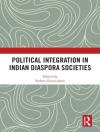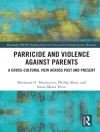Setting a case study of deaf people’s leisure practices in north-west England within a wider examination of communal deaf leisure across Britain, this book offers new insights into a misunderstood and misrepresented community. The book provides a detailed analysis of deaf people’s leisure during the second half of the twentieth century, which questions perceptions of deafness as a disability, investigates the importance of shared leisure in community formation more generally and examines the ways in which changing patterns of socialisation are affecting British society. Although focusing on the British deaf community, the concepts and principles explored in this book can be applied across a wide range of social, cultural and ethnic groups. This book draws upon a wide range of subject areas and will consequently be of interest to students and academics working in the fields of disability, history, community and cultural minority studies, sport, leisure and regional studies
Inhaltsverzeichnis
1. Introduction
2. Defining the deaf community and deaf culture in Britain
3. The development of deaf clubs in Britain
4. Sustaining communities through shared leisure and sport
5. British Deaf News: a window on the deaf world
6. Communal deaf leisure in post-war Britain
7. Leisure and sport in north-west England since 1945
8. The leisure lives of deaf people in north-west England, 1945–95
9. Leisure in the deaf community: more than just passing the time
Select bibliography
Index
Über den Autor
Martin Atherton is Course Leader and Senior Lecturer in Deaf Studies at the University of Central Lancashire












